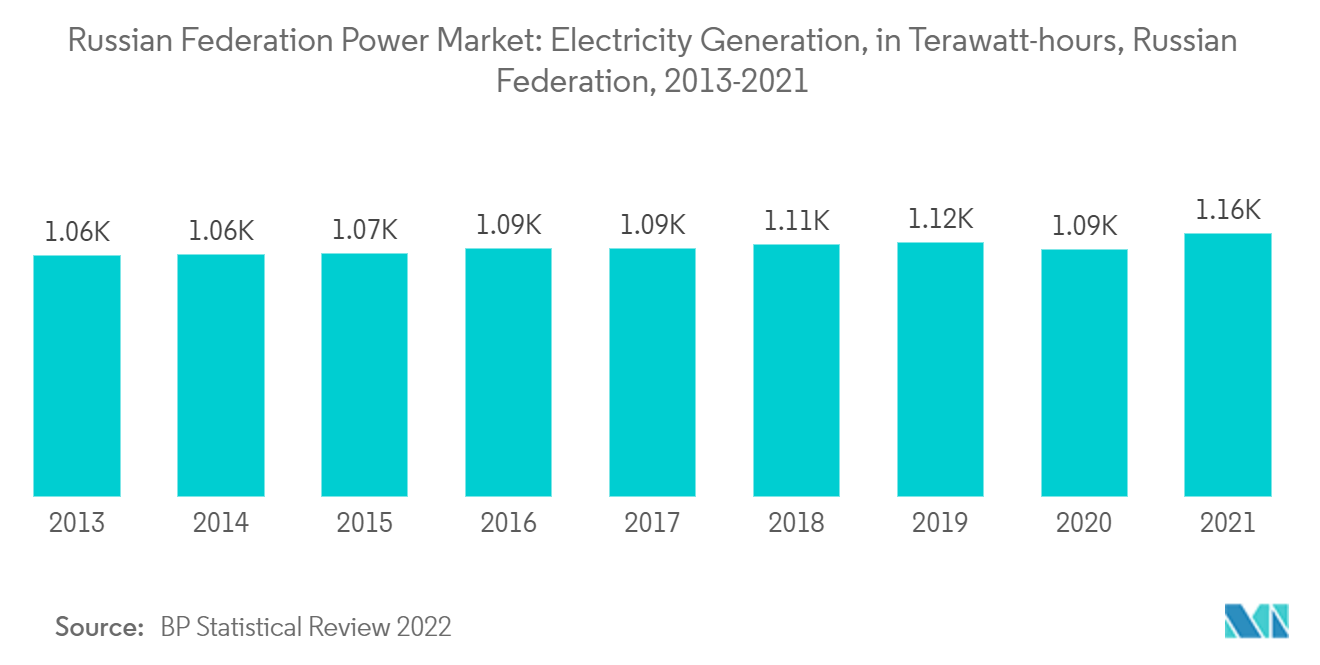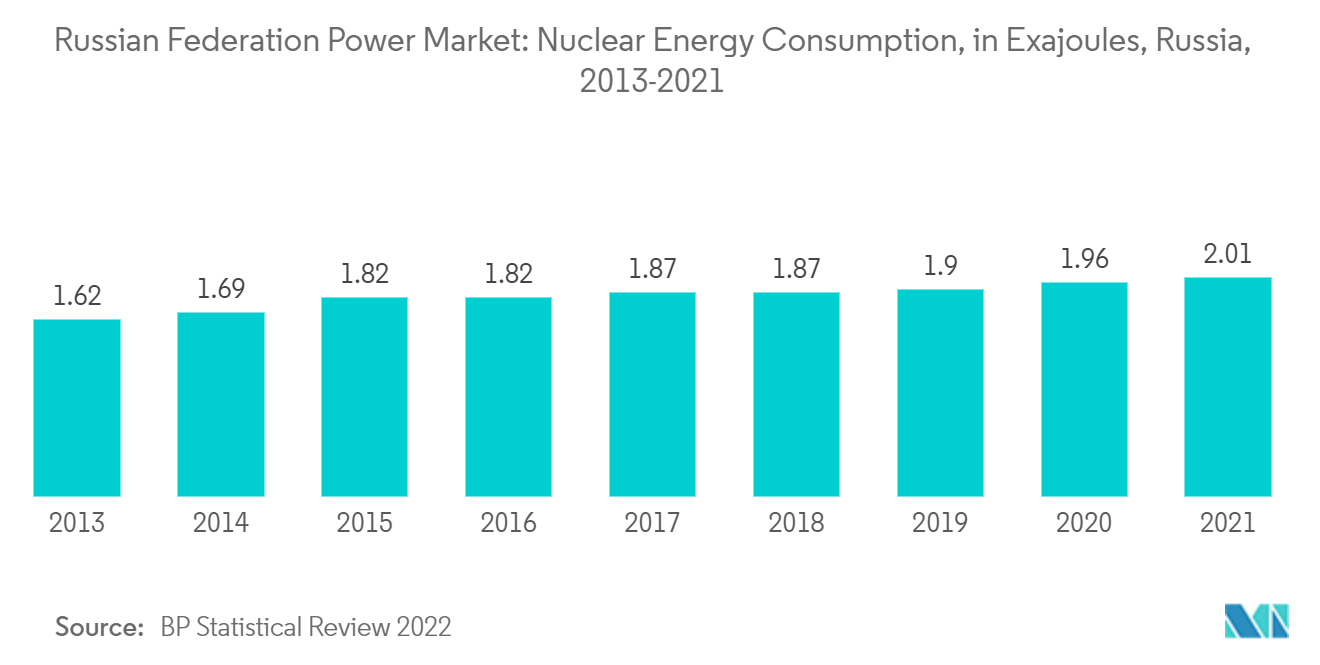Market Trends of Russian Federation Power Industry
This section covers the major market trends shaping the Russian Federation Power Market according to our research experts:
Thermal Power Generation a Major Source of Energy
- Thermal power generation uses a variety of sources ranging from fossil fuels like coal and oil to renewable sources like wind and solar. The energy mix for electricity generation is dominated by fossil fuels like coal, oil, and natural gas, with the three constituting over 75% of the global energy mix.
- The power generation mix is heavily skewed toward natural gas, with a significant contribution because of cheaper domestic fuel availability and the vast reserves in Russia. Its share in the mix has increased over the years due to constraints in adding other conventional generation sources - hydro, solar, and oil.
- Moreover, power generation in Russia increased by 6.9%. In 2021, the power generation was 1,157.1 terawatt-hours compared to 2020, which was 1,085.4 terawatt-hours.
- The dynamic power market of the Russian Federation is going to reduce the oil share grade. Still, with vast reserves, natural gas and oil will remain the primary energy source in the forecast period.
- In November 2022, The Taganrog Boiler-Making Works "Krasny Kotelshchik" (TKZ) announced that it was planning to supply a convection superheater at Nizhnekamsk CHPP. The long-term comprehensive program for the modernization of the plant boiler equipment is implemented by the official dealer of the Taganrog enterprise in Tatarstan - the TKZ-Service company.
- Owing to the above-mentioned factors, thermal power generation is likely to be a significant energy source.

Growing usage of renewables and nuclear power to witness significant growth
- Russia is making significant progress in using nuclear energy more extensively, including the development of new reactor technology. The country runs 38 nuclear power reactors and is rapidly advancing plans to increase the use of nuclear energy.
- With a target share of 4.5% in total electricity from renewables by 2024, Russia is planning to shift toward renewables. Under the Russian Energy Strategy, Russia had planned to install 25 GW of renewable energy by 2030. Also, in January 2022, the Russian government approved a new tender scheme for renewables for the period 2025-2034, the total budget for which is USD 1.88 billion.
- In November 2021, Russian PV manufacturer Hevel completed the construction of its 30 MW Russko-Polyanskaya solar plant in Western Siberia. The solar field is expected to generate 35.5 GWh, enough to power 3,000 rural houses, the local government estimated. The plant cost is around USD 40 million.
- Moreover, Russia is highly dependent on its hydrocarbon reserves for energy requirements, which is an additional factor apart from the massive cost involved in the development of renewable energy sources. Bold steps and policies are expected to be taken with the upcoming Energy Strategy for 2030 implementation.
- Russia's nuclear energy consumption increased by 2.9%. In 2021, the nuclear energy consumption was 2.01 Exajoules as compared to 2020, which was 1.96 Exajoules.
- Owing to the above-mentioned points, the usage of renewable and nuclear energy is likely to increase during the forecast period.


